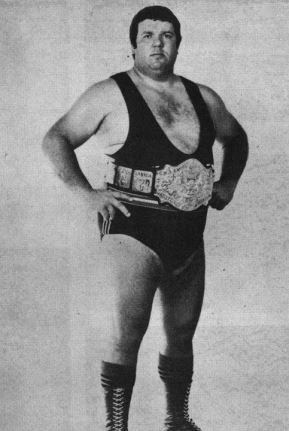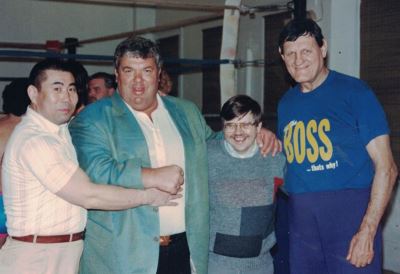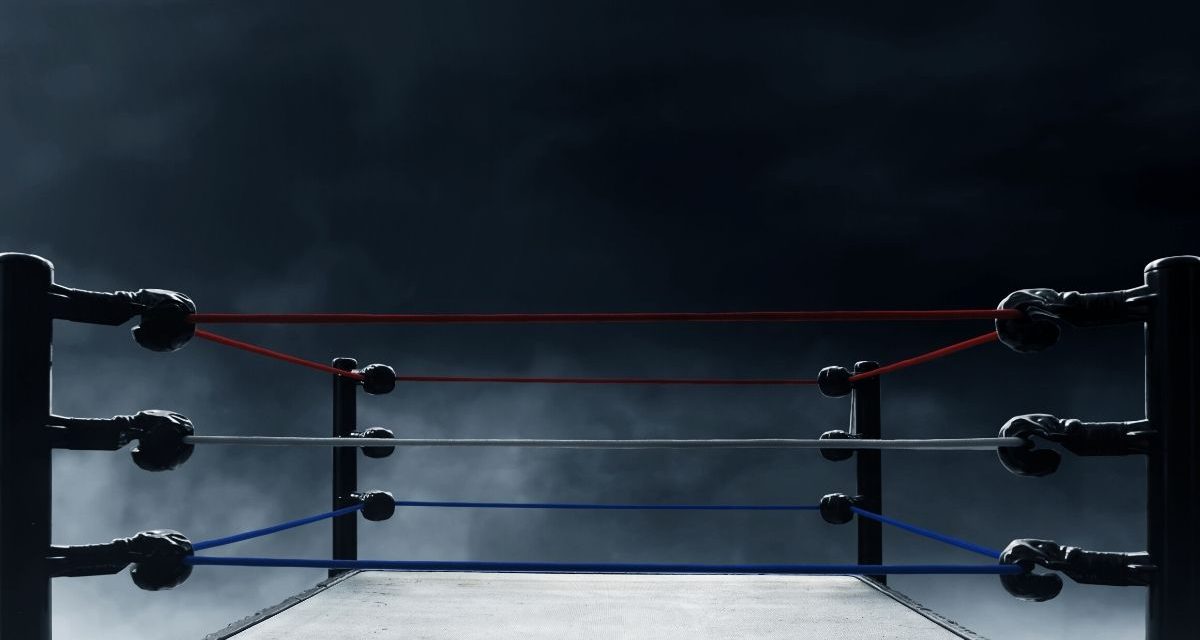Former AWA World champion Otto Wanz, a legend as a wrestler and promoter in Germany and Austria, has died. He was 74. That he ever became AWA World champion is part of a his lore.
The scene was August 29, 1982, the St. Paul Civic Center, in St. Paul, Minnesota, as Wanz, who had only been working in the AWA a short while, faced the champ, Nick Bockwinkel in a championship bout, in front of roughly 12,000 fans. Wanz used a suplex to win the title.
To call it a surprise is a bit of an understatement.

Otto Wanz with the CWA title.
For years, the rumour was that Wanz, a successful promoter in Europe, had paid outright for the chance to be AWA World champion, though neither AWA promoter Verne Gagne nor Bockwinkel ever confirmed the allegation. Dave Meltzer of The Wrestling Observer Newsletter wrote that it was a “business deal to get himself the AWA title belt” years later.
It was a short reign, as Bockwinkel won the belt back at Chicago’s International Amphitheatre on October 9, 1982.
But the reign is part of wrestling lore for a reason. It cemented Wanz on an international scale.
The Pro Wrestling U.S.A. Book, Mat Wars!, written by Gagne and Jim Melby, included Wanz, even though it came out in 1985 and the German had hardly worked in the U.S. at all after the title switch.
“Otto Wanz, a man mountain that walks, is generally considered the best wrestler in the European ring,” reads the kayfabe-style book. “Not being one to sit back and bask on the laurels and acclaim that he has gained there, Otto ventured to faraway countries to prove his mettle and merit.”
Wanz, billed at 6-foot-3, and 360 pounds at the time of his AWA victory, was born June 13, 1943, Nestelbach, Austria, a small town near the bigger Graz, where he was usually billed from. The big man was initially a boxer, winning two Austrian championships during more than 100 fights, before turning to wrestling.
As an amateur wrestler, he was Austrian champion in the freestyle division. Naturally, an offer to turn pro followed, and he entered a tournament in 1968 in Austria. A bigger break, though, came in 1970, when he worked for promoter Nicola “Nico” Selenkowitsch, who was based in Germany. In April 1972, Wanz won his first tournament, which was the style for that part of Europe, with wrestlers staying in the same location for weeks, facing off against each other. That tournament win in Bremen against Iwan Strogoff set the stage for so much more.
The major German promoter Gustl Kaiser took notice and he put Wanz in the European title picture, a title he’d hold often.
In South Africa in 1977, Wanz made headlines winning the newly-created CWA title from Jan Wilkens. He’d have legendary matches against Don Leo Jonathan, including one on November 9, 1977, in Sun City, South Africa, that had more than 20,000 fans in attendance—a remarkable number for the time.
The CWA title, which he’d win from Jonathan, became Wanz’s calling card, and he held the title until dropping it to Vader (Leon White) in Denver, Colorado in March 1987. During his many tours of Germany, Vader had been known as Bull Power.
Vader was hardly the only big star to spend time in Germany. André the Giant actually once allowed Wanz to not only slam him, but to pin him. The likes of Big John Studd, Antonio Inoki, Sgt. Slaughter, and King Kong Bundy competed for and against Wanz in Germany.
Canadian Joe E. Legend is one of those who got a break through Wanz. Calling him “the man who gave me my first gigs in Europe (Germany, specifically… where I now live)” Legend said on Facebook that Wanz “was the source of a litany of great workers and of even more great stories. If he hadn’t been kind and generous enough back in 1998 to take a chance on me, my life would be VERY different. Thank you so much Otto, for the memories and opportunities. All of which I am truly indebted to you for. RIP, sir. You really changed my life.”
Referee James Beard shared his recollection of the tours of Germany that Wanz promoted on Facebook. Wanz “ran a very unique promotion in Europe that traveled from town to town and would run nightly events in the same building, drawing big crowds each night for several weeks in a row. It’s hard to fathom any promotion doing that these days, but he was successful and utilized well known wrestlers from Europe like Fit Findlay and Tony St Clair and stars from different countries to make up his rosters, which competed in a tournament style format.”
As well, Wanz worked in Japan on a fairly regular basis in the 1970s, and was listed in the Guinness Book of World Records for destroying telephone books with his bare hands. The phone book ripping was a gimmick he often did before bouts, especially during his time in North America.
Big John Quinn, originally from Hamilton, Ontario, was a huge name in Europe, calling it home for 15 years, from 1978 to 1987. While he will admit that he made money with Wanz, Quinn is decidedly not a fan, calling him a “wannabe.”
“Otto believed in Otto. Otto should have either been a wrestler or a promoter, and he should have dropped out and been a promoter because he kept pushing himself. The towns were getting smaller and smaller, and he couldn’t see it,” recalled Quinn. “He was a terrible wrestler, but he started to believe his own publicity. He threatened me in the dressing room one day. I looked at him and said, ‘What?’ He said he was going to punch me out. I said, ‘What?’ For one thing, he couldn’t even catch me, let alone punch me out.”
Of course, the Wanz that Quinn is referring to isn’t the Wanz in his prime, but a man that was clinging to past laurels. After winning the CWA title for a fourth time in 1990, Wanz retired for good from active wrestling. He continued as a promoter, though, staying involved until 2000.

Tokyo Joe Diago, Otto Wanz, historian Tom Burke and Killer Kowalski. Photo courtesy Tom Burke
Even in retirement, Wanz continued to be a well-known name, often appearing in commercials, acting in films or even singing. In 2011, an Austrian TV show profiled him. During his later years, he promoted strongmen competitions in Austria with his son Michael.
Details of his death on September 14, 2017, are not known at this time. An Austrian website reported that it was a “short, serious illness.”
– with files from Ronald Großpietsch

